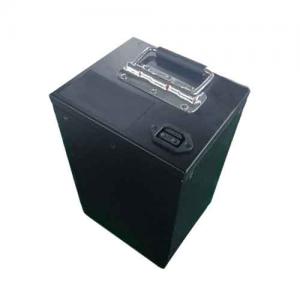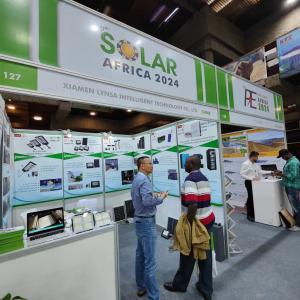How to Heat Lithium Battery in Low Temperature?
The energy and power characteristics of lithium-ion power batteries are severely attenuated in low-temperature use. Microscopically, the low-temperature performance of lithium-ion power batteries is manifested as the temperature decreases, the impedance of the power battery increases, the discharge voltage decreases, and the terminal voltage of the battery drops rapidly, resulting in its available capacity and power greatly attenuated. In addition, the power battery is not only difficult to achieve high-current discharge at low temperatures, but also due to the increase in battery impedance, the charging voltage rises rapidly, which shortens the time for the battery to reach the charging protection termination voltage. Therefore, there are disadvantages of charging difficulties and low charging efficiency.Cryogenic lithium batteries are already a common type of cryogenic batteries. Because the chemical composition of the battery is limited, it cannot react normally in a low-temperature environment to make the low-temperature lithium battery work, so the low-temperature battery needs to heat the temperature of the battery to a certain extent to make the battery work.
So what are the common low-temperature heating technologies for lithium batteries?
1. Internal self-heating method
Generally speaking, the purpose of self-heating can be achieved by charging or discharging the battery. However, in a low temperature environment, there is a risk of lithium analysis when charging the battery. Therefore, the amplitude of the charging current must be strictly controlled, which leads to the slow heating speed of the charging heating method. In contrast, thanks to the high potential of the negative electrode during the discharge process, there is almost no risk of lithium analysis in the battery. Therefore, the discharge self-heating method has more application value. As far as simple applications are concerned, there are two modes of constant voltage discharge and constant current discharge. The internal self-heating circuit is simple in composition, low in realization cost, and has a fairly high heating speed. However, a large amount of energy is consumed on the external load during the heating process, which is not fully utilized, resulting in low energy utilization efficiency of the internal self-heating method. During the heating process, the battery discharges at a high magnification current, which may cause the battery to be over-discharged and increase the risk of battery aging. At the same time, the internal self-heating method consumes more than 15% of the battery capacity during the heating process, making it only suitable for use under high state of charge (SOC) conditions, otherwise it will cause the battery to run out of energy.
2. MPH (mutual pulse heating) heating method
The MPH heating method uses a battery and another energy storage element (such as a battery and a capacitor) to form a heating circuit, and the battery is heated by the charging and discharging process of the battery. The MPH heating method can achieve a higher heating speed and ensure good temperature uniformity. Compared with the discharge self-heating method, most of the battery energy consumed by the MPH heating method is used for heat production inside the battery, and only less energy is consumed on the external circuit. Therefore, the energy utilization efficiency of the MPH heating method is higher. The energy consumption in the heating process generally does not exceed 10% of the battery capacity, and the heating time generally does not exceed 5 min. In order to reduce the impact of the pulse current heating strategy on battery aging, it is necessary to optimize the amplitude and frequency of the pulse current from the model.
3. Self-heating lithium-ion battery
Self-heating lithium-ion batteries can generate a lot of heat in a short period of time, and the heat generated by the thin nickel sheet dominates. However, the laminated structure of the battery cell makes the battery have only a small heat transfer coefficient in the thickness direction, causing a large temperature gradient from the thin nickel sheet to the outer surface of the battery to form inside the battery. The uneven temperature distribution inside the battery further causes the uneven current distribution, which affects the heating efficiency and battery life. In order to improve the temperature uniformity inside the battery during the heating process, multiple nickel sheets are arranged in parallel at different locations inside the battery.
Although self-heating lithium-ion batteries may cause uneven temperature distribution inside the battery, the maximum temperature difference can be effectively controlled through multi-piece parallel structure design or intermittent heating strategy. However, self-heating lithium-ion batteries require changes to the internal structure of the battery, which reduces the energy density of the battery. At the same time, once the battery loses thermal control, the highly active nickel sheet embedded inside the battery will expose the battery to serious safety risks. Therefore, self-heating lithium-ion batteries need to adopt careful and effective control strategies and accurately monitor and predict the internal temperature of the battery to prevent the battery from overheating and threatening driving safety.
4. AC heating method
The AC heating method generates heat by applying an alternating current to the battery to heat the battery from the inside. The periodic charging and discharging process can quickly heat the battery and keep the battery TEMPERATURE unchanged. The AC heating method can use an external AC power supply, so that the heating process does not consume the battery’s own energy. Among the various forms of alternating current wave forms, sinusoidal alternating current is the most widely used.
The AC heating method has significant advantages such as fast heating speed, high energy utilization efficiency, and good temperature uniformity, and has broad development prospects. In the case of having an external AC power supply, the heating circuit of the AC heating method is very simple and easy to implement.
5. Circulating high temperature gas heating
Air is used as the medium to pass directly through the power battery module to achieve the purpose of heating the power battery pack. Generally, the method of forced air convection is used, that is, the hot air is sent to the power battery box through an external fan and other devices, and the heat is exchanged with the power battery. Hot air can be generated by the heating sheet, or it can be obtained by using the heat emitted by the motor and the high-power electronic and electrical heating devices in the car. For hybrid vehicles, the energy to heat the air can also be provided through the engine. This method requires that the thermal contact area between the air and the power battery be increased as much as possible, which has the advantage of low cost. However, the packaging, installation location and thermal contact area of the power battery need to be designed to improve energy utilization and heating uniformity.
6. Circulating high temperature liquid heating
It is similar to the circulating high-temperature gas heating method, but because the liquid boundary layer is thin and has the advantage of high thermal conductivity, the heat conduction rate of the direct contact liquid is much higher than that of air at the same flow rate. And under more complex operating conditions, the liquid can better meet the thermal management requirements of electric vehicle power batteries. At present, the main method is to use liquid to exchange heat with the outside world to feed heat into the power battery pack. Pipelines can be arranged between the modules or jackets can be arranged around the modules, or the modules can be immersed in liquid. If a heat transfer tube and jacket are used between the liquid and the module, water, ethylene glycol, oil and even refrigerant can be used as the heat transfer medium. If the power battery module is immersed in the dielectric heat transfer fluid, insulation measures must be used to prevent short circuits. The rate of heat transfer between the heat transfer medium and the wall of the power battery module mainly depends on the thermal conductivity, viscosity, density and flow speed of the liquid. At present, the liquid heating method has high requirements for the sealing and insulation of the power battery box, which will increase the complexity of the design of the entire power battery box. There are still many problems in terms of reliability that need to be solved.
7. Heating plate and heating film heating method are arranged on the surface of the power battery
Heating plate heating refers to adding an electric heating plate to or between the top or bottom of the power battery pack. When heating, the electric heating plate is energized, and part of the heat of the heating plate is directly transmitted to the power battery through heat conduction. The heating plate is used for heating, the heating time is long, and the temperature distribution of the power battery pack after heating is uneven, resulting in a large temperature difference. The wide-wire metal film is attached to the two larger sides of the power battery cell for heating. The temperature uniformity of this method is good and the heating efficiency is high, but it requires a precise temperature control system, and at high temperatures, it will affect the heat dissipation of the power battery cell to a certain extent.





